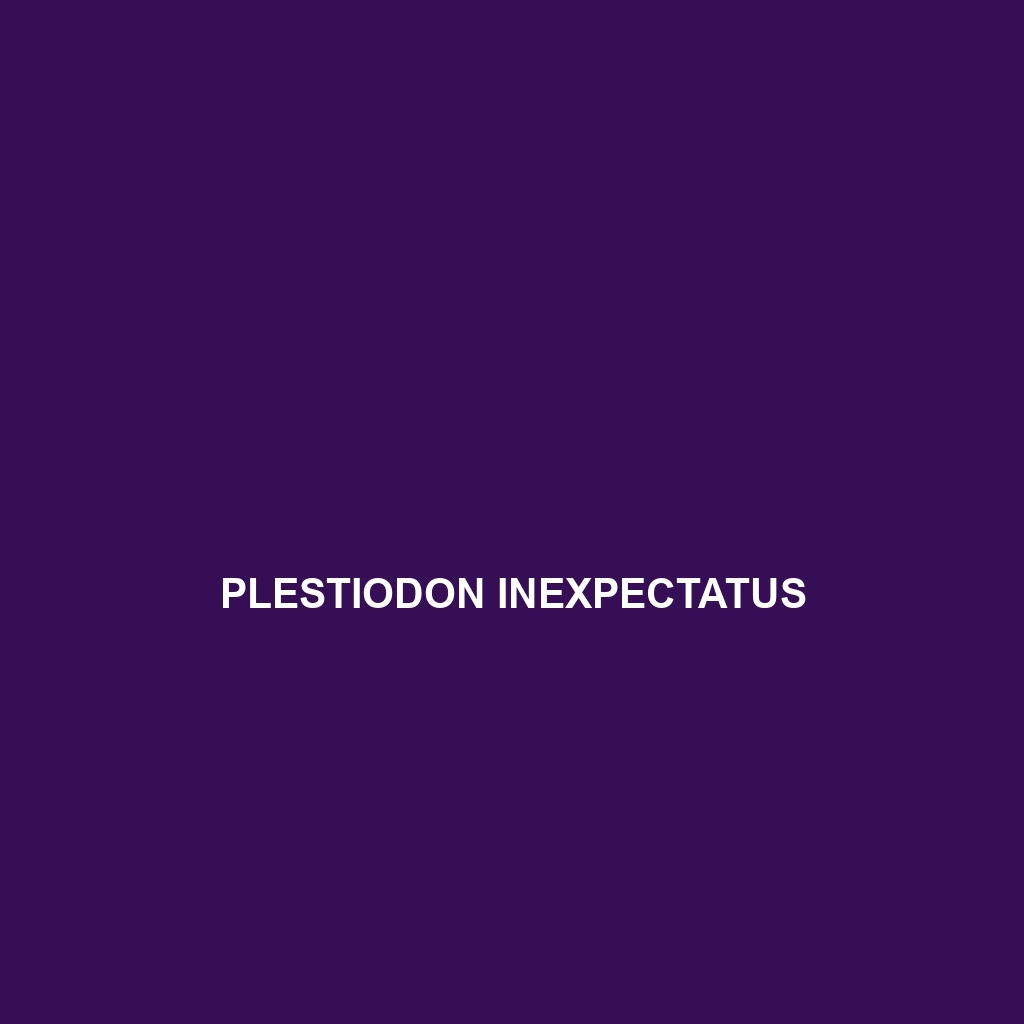Common Name
Plestiodon inexpectatus
Scientific Name
Plestiodon inexpectatus
Habitat
Plestiodon inexpectatus, commonly known as the southeastern five-lined skink, is primarily found in the southeastern regions of the United States. This species predominantly inhabits environments such as temperate forests, savannas, and grasslands, often near decaying wood and leaf litter which provide necessary cover. Its distribution includes states like Florida, Georgia, and Alabama, where the climate ranges from humid subtropical to temperate conditions. These lizards thrive in areas with plentiful sunlight and moisture, making them adaptable to rainforests that are rich in underbrush, as well as drier habitats that still offer sufficient ground cover.
Physical Characteristics
The Plestiodon inexpectatus exhibits distinctive physical traits that make it easily recognizable. Typically, adults reach a length of 7-9 inches (18-23 cm), with a slender body and a long tail that may be up to twice the length of their body. Their coloration is one of their hallmark features, displaying a vibrant array of shades including olive-green, brown, and gray, complemented by five characteristic lighter stripes running along the length of their bodies. The scales are smooth and shiny, allowing for efficient movement through vegetation. Notably, juvenile skinks display brighter colors than adults, making them a stunning sight in their natural habitat.
Behavior
Behaviorally, Plestiodon inexpectatus is primarily diurnal, meaning that these lizards are most active during the daytime. They are known for their agility and speed, often darting into cover at the slightest hint of danger. A remarkable aspect of their behavior is their social structure; these lizards can often be found basking in the sun in groups, yet they display territorial tendencies, especially in males during breeding season. Mating rituals involve elaborate displays, including head-bobbing and body posturing, which are critical for attracting partners. The breeding season occurs in late spring to early summer, followed by the establishment of their nesting territories.
Diet
The feeding habits of Plestiodon inexpectatus classify them as primarily insectivores, with a diet that includes a variety of insects such as crickets, beetles, and caterpillars. Occasionally, they may also consume small fruits and plant matter, showcasing some omnivorous tendencies. Their feeding patterns are opportunistic, and they employ a foraging strategy that involves searching through leaf litter and soil to locate prey. This behavior is essential for their survival, especially in environments where they face competition from other local fauna.
Reproduction
Reproduction in Plestiodon inexpectatus typically takes place during the warmer months, with females laying eggs in late spring. On average, a clutch contains 5 to 15 eggs, which females incubate in concealed locations such as under rocks or decaying organic matter. The gestation period is approximately 30-50 days, after which hatchlings emerge to start their independent lives. Parental care is minimal, as once the young are hatched, they must fend for themselves, utilizing their natural camouflage to evade predators. “Survival of the fittest” is a mantra among hatchlings, as only a fraction will reach maturity.
Conservation Status
The conservation status of Plestiodon inexpectatus is categorized under “Least Concern” by the International Union for Conservation of Nature (IUCN). However, local populations may face threats from habitat destruction due to urbanization and agricultural expansion. Conservation efforts focus on habitat protection, ensuring that their ecological niches remain intact to support stable populations. Community awareness programs aim to highlight the importance of these skinks in their ecosystems, particularly in reducing pest populations.
Interesting Facts
One interesting fact about Plestiodon inexpectatus is their ability to regenerate their tails when lost, a common trait among skinks that enables them to escape predators. Additionally, these lizards are often observed basking with other species, showcasing a unique aspect of interspecies relationships in their habitats. Their shiny scales also make them commonly sought after by reptile enthusiasts, contributing to their popularity in both the wild and the pet trade.
Role in Ecosystem
Plestiodon inexpectatus plays a vital role in its ecosystem as both a predator and prey species. As insectivores, they help control insect populations, significantly impacting the health of their native habitats. Additionally, they serve as prey for various birds, snakes, and mammals, forming an essential link in the food web. By participating in the nutrient cycling of their environments through their feeding and nesting behaviors, they contribute to maintaining ecological balance. Their presence in an ecosystem indicates a healthy environment, making them valuable indicators of biodiversity.
